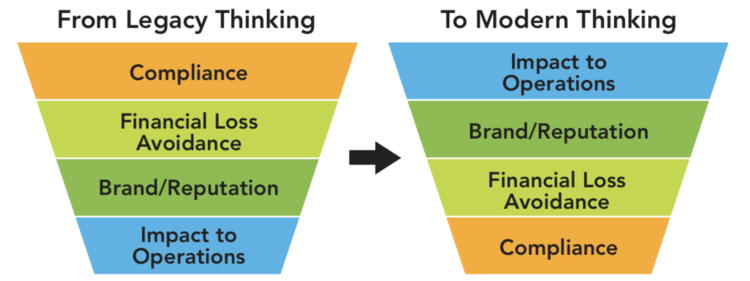 What are your priorities as a business continuity management professional? Your to-do list might immediately spring to mind with tasks such as a business impact analysis or planning session blinking red. Yes, those things need to be done, but they do not answer the question. Forget what you have to do in the short term – what are your priorities for the long term?
What are your priorities as a business continuity management professional? Your to-do list might immediately spring to mind with tasks such as a business impact analysis or planning session blinking red. Yes, those things need to be done, but they do not answer the question. Forget what you have to do in the short term – what are your priorities for the long term?
Legacy thinking is that business continuity is driven by compliance first and foremost and that it seeks to avoid financial loss, protect brand and reputation, and – lastly – manage the impact to operations. While this model is not “incorrect” as such, it effectively undercuts any chance of driving cultural buy-in by putting compliance as the top priority. Compliance just does not motivate the average executive or employee.
It’s time to turn that model on its head! Businesses today are vitally concerned with maintaining business operations and avoiding or mitigating any impact a disruptive event might cause. Since that is a top organizational priority, it needs to be acclaimed as the top business continuity priority. Right underneath that should be the goal of protecting the company’s brand and reputation.
Then comes financial loss avoidance – after all, the bottom line is the bottom line and needs to be safeguarded. However, if the first two priorities are being met appropriately, financial loss will be avoided as a natural consequence.
Finally, compliance should be considered. But again, if business continuity is taking steps to minimize impact to operations, protect brand reputation, and avoid financial loss, it is highly likely that compliance demands are also being met or exceeded.

Reorganizing business continuity’s priorities in this way achieves alignment with the business’ overall goals and objectives. Find out more on how to build a business continuity culture by reading the white paper 8 Steps to Building an Engaging Business Continuity Management Culture.




